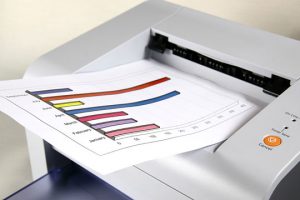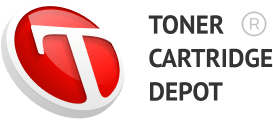
If you’re looking to outfit your business with a new printer, now is a great time to buy a color laser. Whether you’re a single user who prints newsletters at home or you’re buying for a corporate marketing department that designs collateral materials, you’re in a buyer’s market. Color laser printers are becoming progressively faster, smaller, and cheaper to operate than ever before, and with prices starting at $300, they’re affordable for all budgets.
The lowest-end (sub-$500) color laser printers, while incredibly affordable, are typically slow and have limited paper capacity–and they aren’t cheap to operate, due to the relatively high cost of consumables. Printers in the $500-to-$1000 range are faster, handle more paper and different paper sizes, and cost less to maintain than inexpensive models. If you’re prepared to pay over $1000, the sky’s the limit: You’ll find printers with workhorse print speeds, large-capacity paper trays, lower costs per page, and sophisticated paper options. Here are a few key features to consider when looking for a color laser that will work best for your business.
Speed
Before you buy any printer, you’ll need to figure out how many pages your office prints per month. Then you’ll need to look at the specified engine speed and monthly duty cycle of the printer you’re considering, to see whether your usage pattern fits within the printer’s capabilities.
The printer’s engine speed, expressed as a page-per-minute (ppm) specification, tells you how fast the printer is under ideal conditions (or, in some cases, the rather unnatural conditions achieved in a vendor’s test environment). The cheapest color laser printers, not surprisingly, are usually far pokier than their makers claim them to be. Nevertheless, engine speed is a decent guideline for figuring out whether the printer can handle your office’s output on a day-to-day basis. The more people who use the printer, and the more they print, the higher that engine speed should be–unless you like hanging around the printer with your coworkers, waiting to see whose print job comes out first.
The same goes for the printer’s specified duty cycle, which defines the manufacturer’s threshold for the maximum number of pages printed per month. You want a lot of room between your usual print volume and that maximum. Light-duty, entry-level printers typically have a duty cycle of 30,000 pages per month. Sub-$1000, midrange printers have an average duty cycle of 60,000 pages per month; high-volume, $1000-to-$2000 printers average 100,000 pages per month.
To be continued.
